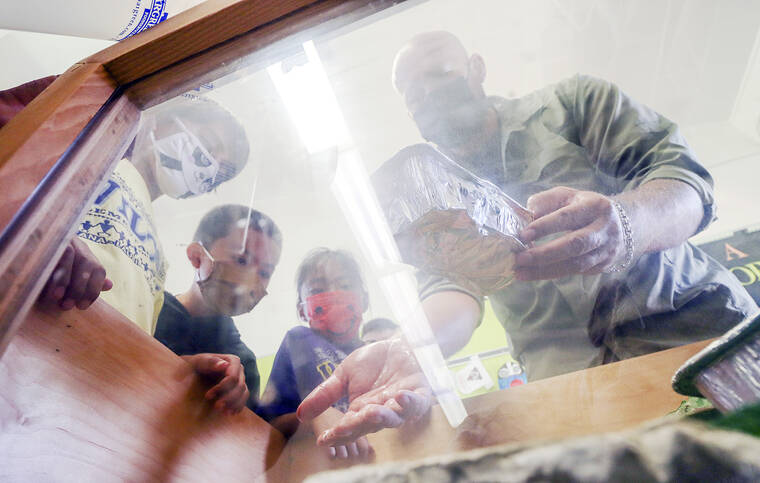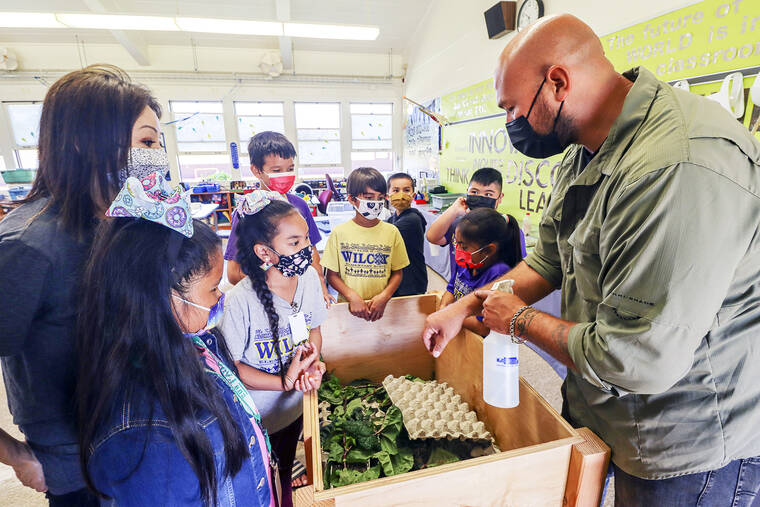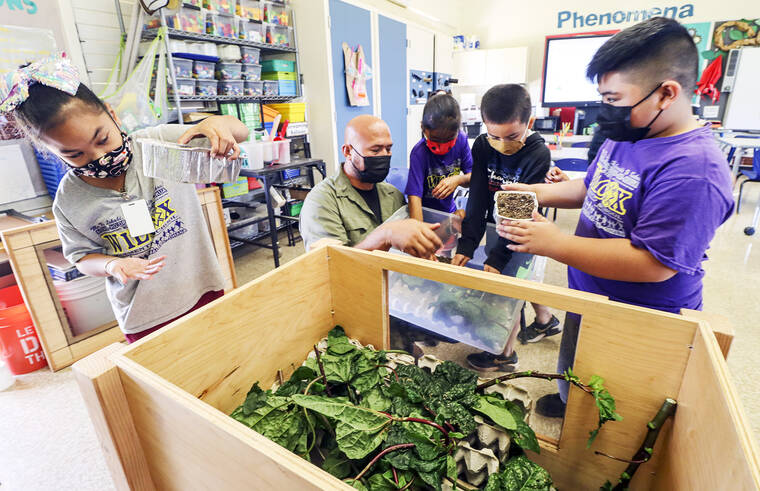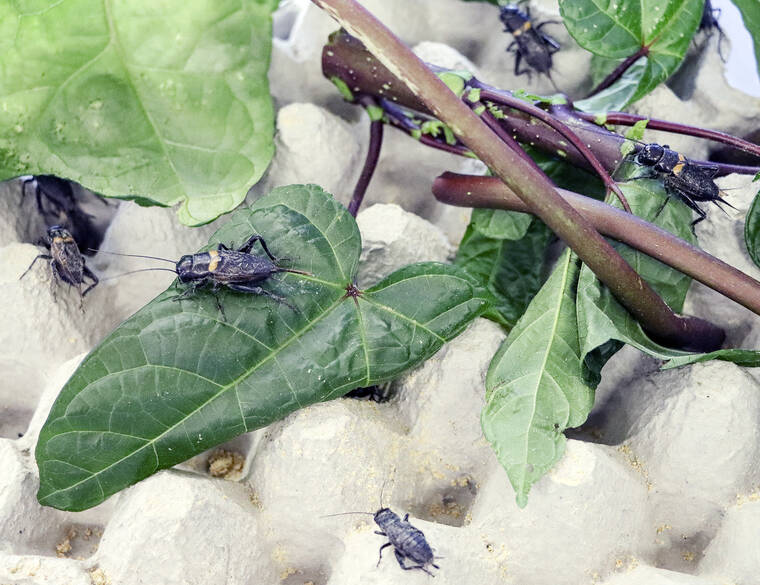When Wilcox Elementary School teacher Natsumi Miyasato and her science, technology, engineering and mathematics (STEM) class established the school’s first cricket farm, the motivation was food sustainability based on Miyasato’s childhood background of eating crickets while growing up in Japan.
While plotting the progress of the fledging farm, the novel coronavirus made its way to Hawai‘i and shut everything down with the closure of schools and the trek to distance learning.
Two years later, Miyasato, armed with a new mentor, Emilio Ruiz Romero of Resilient Roots, and her STEM class dug out the original cricket farm, and with Romero’s help re-stocked the caged enclosure with pinheads, or infant crickets, Thursday.
New developments and research added to the anxious students, who were given hands-on acquaintance with the crickets that frolicked in the plastic container they arrived in.
“A lot of things have happened since we started growing crickets,” Romero said. “When I started in 2015, there were only five cricket farmers in the United States. Now, I’m the only cricket farmer in Hawai‘i.”
The motivation for growing crickets also changed with the cricket byproducts, including Cricket Krass becoming more valuable as a fertilizer than having crickets as food, although crickets can still be consumed as additions to stir fry, and eaten processed and dried as snack morsels. Romero said 80 percent of the world’s population are insect-eaters, with the exception being the United States and parts of Europe.
“I can attest to the fertilizer part,” said Wilcox School Principal Corey Nakamura, who watched the students reinvigorate the farm that had been relegated to storage during the COVID-19 pandemic. “I used to work in a fertilizer store while in college, and the formulation for Cricket Krass makes it ideal for house plants, seedlings and starters.”
Nakamura pointed out that with the help of Grove Farm Company, the area next to the school’s offices has a cricket farm growing. This brings in the concept of vertical farming, Romero pointed out, anxious to see the new structure that replaces the aging hydroponic greenhouse.
“We grow crickets as part of our study in climate change and global warming,” Miyasato said, leading the class’s discussion. “Growing crickets uses a lot less water than raising cattle.”
Even food sources for crickets have changed.
“This lady from Kilauea told me I could have a lot of what she was growing,” Romero said. “I took a lot of different vegetables, and among that, laupele, which is an edible hibiscus. Guess what? The crickets liked the laupele best. It’s not only a superfood for humans, crickets get food and water from the plant. And, the Thai people told me about cassava. Crickets love the leaves.”
As the students laid down laupele leaves and stems, Romero flicked an aphid that found its way to his arm.
“Crickets eat these,” Romero said. “They’re on the laupele leaves and do not pose threats to crickets. You do have to watch for spiders, though. These eat crickets.”
Romero said Hawai‘i has the ideal climate for growing crickets, unlike other aeras where farmers need electric warmers to keep the crickets from freezing. The weather also supports the growing of laupele and cassava that crickets like to eat.
With its environment created from discarded egg trays, cardboard tubing and the laupele branches, Romero estimated the cricket farm should produce more than a thousand crickets.
Miyasato was pleased because, due to the life cycle of the crickets, the students should be able to enjoy at least one harvest before the summer break.
•••
Dennis Fujimoto, staff writer and photographer, can be reached at 245-0453 or dfujimoto@thegardenisland.com.











